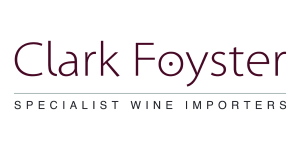The Weingut Moric Story

We first bought wines from Roland on our very first shipment from Austria in 1998. At the time he was working with his brother and father on the family property, Weingut Velich, in Apetlon, which was all about white and sweet wines. His brother Heinz continues to run this excellent estate. But Roland’s fascination for Blaufränkisch, not suited to the vineyards on the east side of the lake, took him elsewhere and in 2001 he released the first wines from the Moric project (You pronounce this ‘Moritz’) . Roland is outspoken, and said openly that the examples of Blaufränkisch coming out of the cellars of most producers at the time completely traduced the grape variety. He was very critical of late harvested styles, often artificially concentrated, and shoved into new oak, to appeal to some kind of Robert Parker-ian ideal. In the process he lost a few friends (though probably they never were friends in the first place). For him, Blaufränkisch is essentially a cool-climate grape variety. He talks of it as a grape with some similar characteristics to Pinot Noir, or Nebbiolo, or Northern Rhone Syrah. Others are reminded of Gamay. But all these varieties have freshness and perfume and delicacy at their best, and this is what Roland is striving to achieve. Now, almost 20 years on , he has numerous disciples, and his wines are, for many, the best examples of the grape in the whole of Austria. We also have a wine from his collaboration project with a Hungarian producer, Villa Tolnay, in Lake Balaton. This is one of four wines he has released in collaboration with the producers from other regions in Austria and Hungary. He points out that national borders here are very arbitrary, and recent, and that many wines from the Carpathian Basin, Hungary and Austria share a common ancestry and wine-making culture.
The centre of gravity of the Moric project has shifted towards Lutzmannsburg in the past few years. We’re a stone’s throw from the Hungarian border here, on a plateau which rises, unseen behind the village. It’s a very curious layout; there are wineries in the village but no apparent vineyards until you take the lane up the hill through the trees, which suddenly brings you to a 400 hectare expanse of vines on the plateau . It’s cool and windy up here and there are some very old vines.
He harvests low yields from vines grown with minimal chemical treatment and he uses natural yeasts for slow fermentation, often in open vats. Assemblage is a slow and careful process after extended evolution in cask. No new oak is used. The Moric project is now well established internationally as a fine wine, sought after by increasing numbers of fine wine collectors. They lead the way in creating a world-wide reputation for this wonderful grape variety. Quantities of the top wines are very limited. (LF 4/20)
Weingut Moric Wines
Fine vintages and great wines continue to come out of the cellar. 2016 and 2017 bring fresher styles after the voluptuous richness of 2015. Roland’s philosophy is to produce elegance above all, and he sees a strong affinity for Burgenland Blaufränkisch with Burgundian Pinot Noir, (as well as Northern Rhone Syrah and Nebbiolo) rather than with Merlot and Cabernet Sauvignon, as was the received wisdom in the region before he came along.
White
| Description |
|---|
| Moric Project Balaton Riesling/Furmint |
| Moric Project Somlo |
| Moric Project Tokaj |
Red
| Description | Tech sheet |
|---|---|
| Hausmarke Red Solera | |
| Blaufränkisch, Burgenland | |
| Moric Reserve, Blaufränkisch | |
| Lutzmannsburg Alte Reben, Blaufränkisch | |
| Neckenmarkt Alte Reben, Blaufränkisch |
Large Format Bottles
| Description |
|---|
| Moric Reserve, Blaufränkisch Magnum |
| Lutzmannsburg Alte Reben, Blaufränkisch Magnum |
| Neckenmarkt Alte Reben, Blaufränkisch Magnum |
| Lutzmannsburg Alte Reben, Blaufränkisch (3l) |


